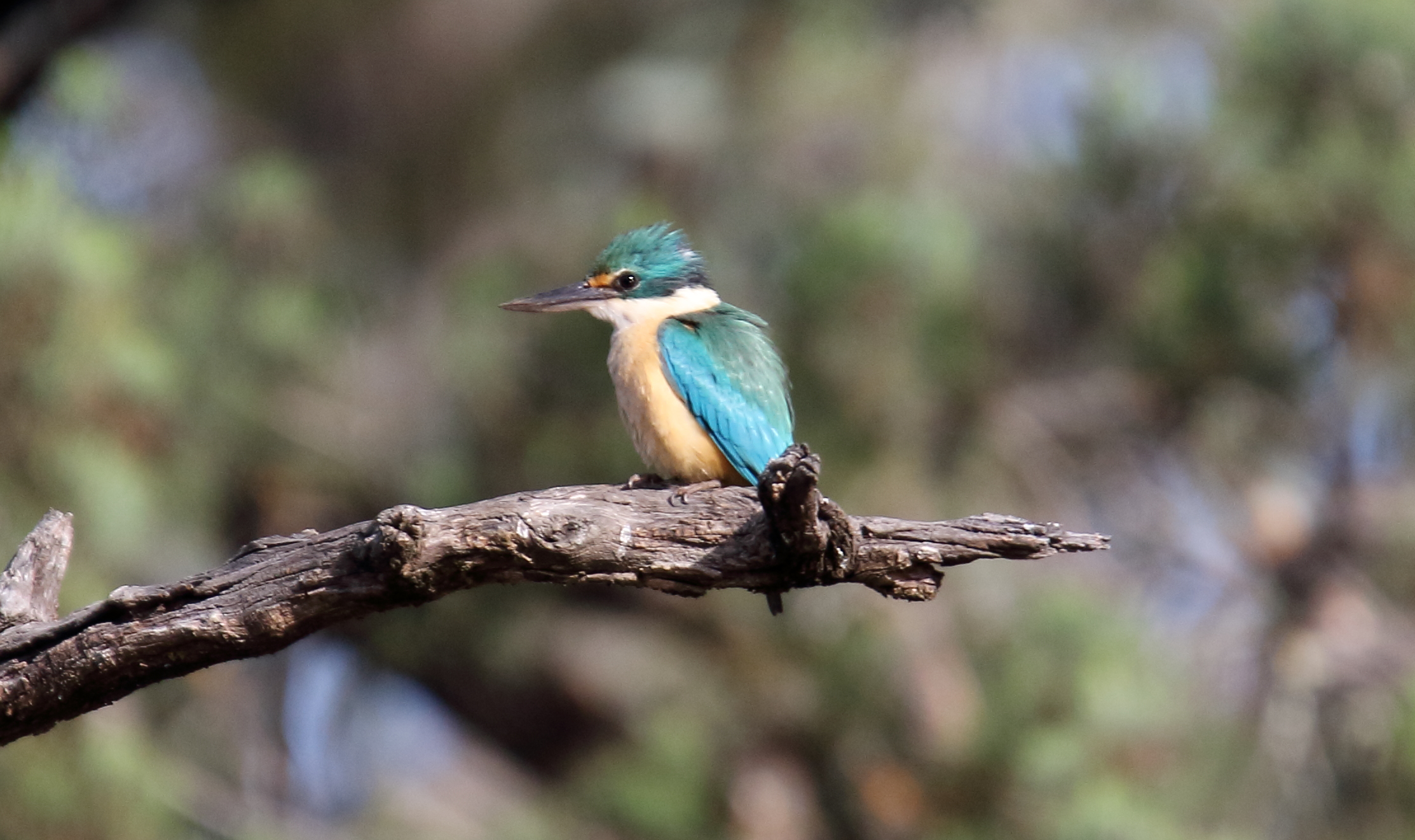A Sacred Kingfisher started calling at our bush block today– with a loud and far- carrying ‘kek kek kek kek’! These brilliantly coloured birds are summer visitors to Victoria, and their calls may now be heard in woodlands and open forests throughout Victoria.
Although they are kingfishers – Sacred Kingfishers don’t necessarily need lakes and creeks, they are known as tree-kingfishers. The most familiar tree-kingfisher is the Laughing Kookaburra.
In fact, out of 13 species of kingfisher in Australia, only four are specialised to catch aquatic prey. One of these is the Azure Kingfisher, a tiny bright blue coloured bird that dives into rivers and in Geelong and in the Otways, hunting very small fish.
The Sacred Kingfisher is the species we see around the central highlands the most, but often people think their bird is an Azure Kingfisher. Compared to a kookaburra, a Sacred Kingfisher does appear very small. And they also assume it must be an Azure Kingfisher because the field guide illustrations of Sacred Kingfisher seem rather dull. I am yet to see an illustration that manages to accurately capture the brilliant colours of the Sacred Kingfisher.

Sacred Kingfisher by Dominic Sherony
https://www.flickr.com/people/9765210@N03
The kek kek kek kek call is a territorial call uttered by the male – he is ready to breed, and after pairing up, he and his mate will be busy defending a nesting territory. Both male and female aggressively defend the territory – from other kingfishers, but also from any species which may be a threat to their eggs and young, including magpies, kookaburras, currawongs and even cats and dogs!
The pair bond is cemented by a couple of displays, both of which I would love to see. One is the nest display, where the male perches near the chosen nest site and then flies back and forth between perch and nest uttering a special call. The second is courtship feeding, where the male finds a particularly choice morsel like a yabby to feed to the female, who makes a begging call like a kingfisher chick, and then accepts it from the male.
In a good nesting season, with plenty of food, the pair may raise two broods. The kingfishers also nest in riverbanks but are more likely to nest in tree hollows.
The Sacred Kingfisher eats mainly insects, as well as earthworms, yabbies, skinks, small rodents, and frogs and tadpoles. I was surprised to read they also may eat birds and their young.
Like their tree-kingfisher cousins, the kookaburras, their hunting method is to perch, motionless for sometimes long periods of time, and then snatch their prey off the forest floor.
Tree-kingfishers prefer open woodlands and forests and are disadvantaged when habitat is covered by big swathe of gorse or broome, which prevents the kingfishers from watching and then grabbing prey on the ground.
This article was printed in a recent edition of The Local – a community newspaper centred around the Daylesford region.
0 Comments